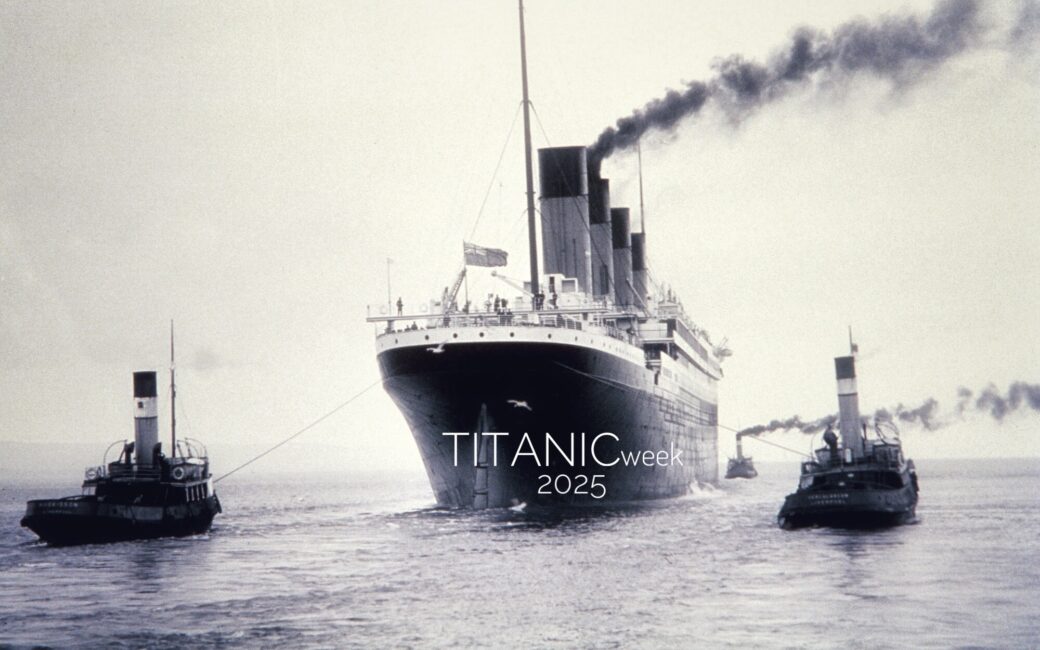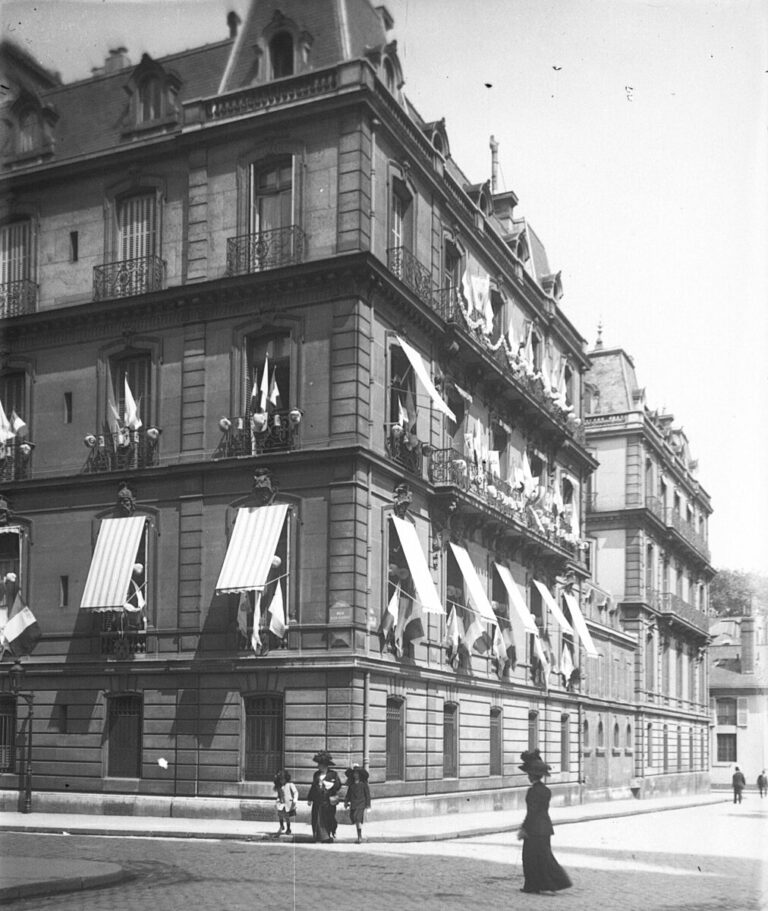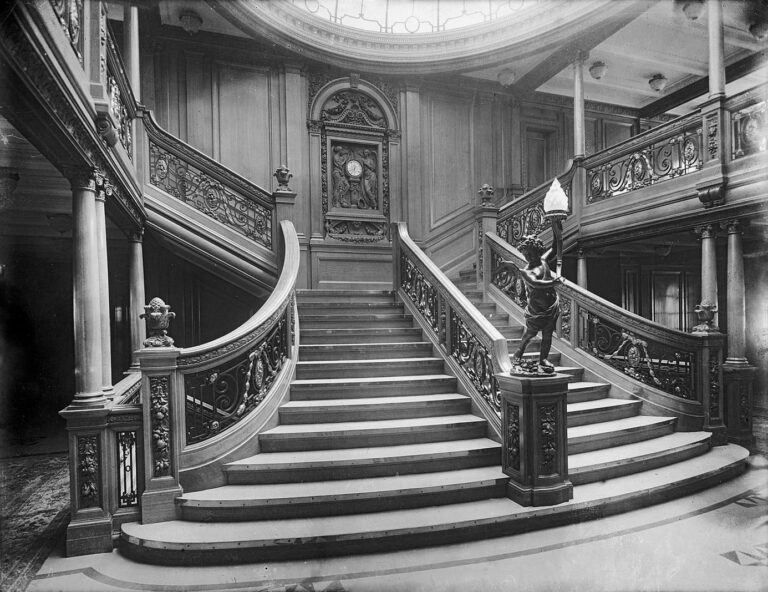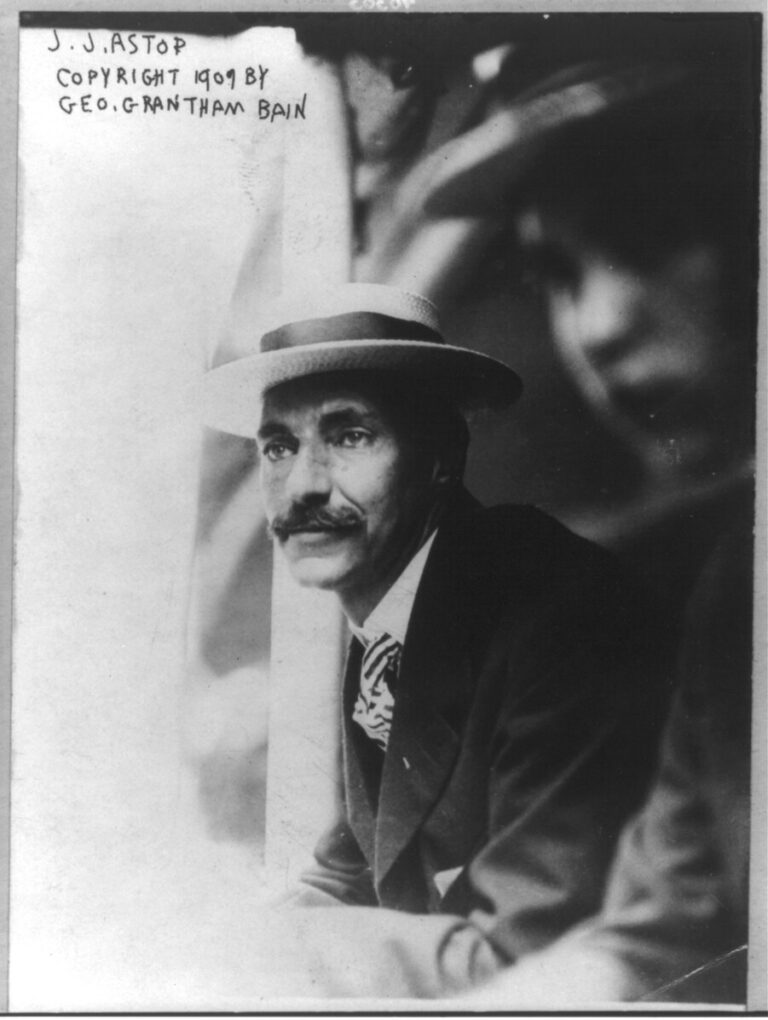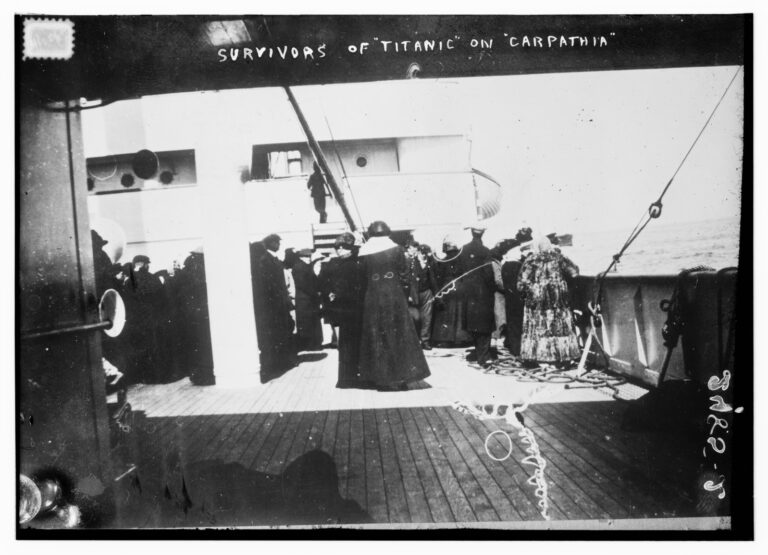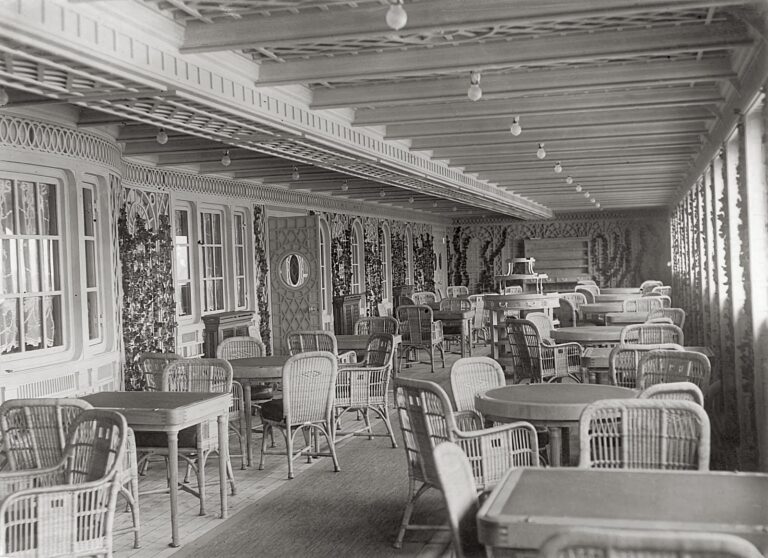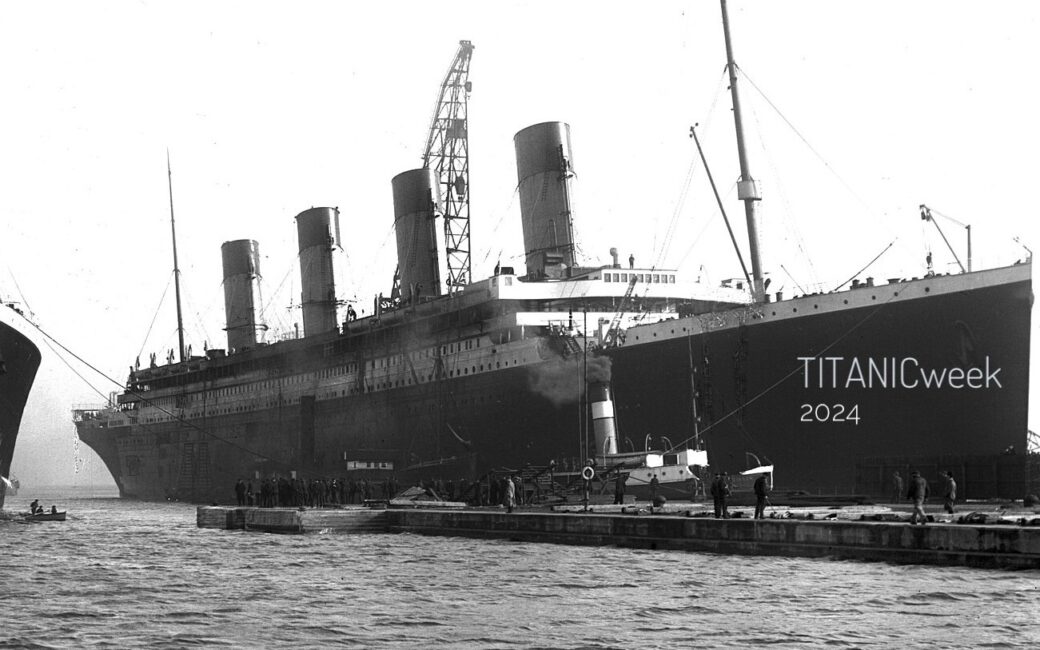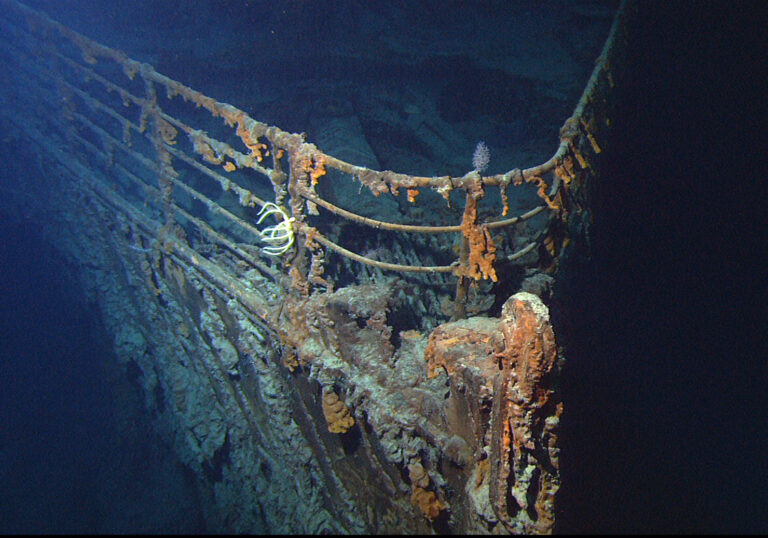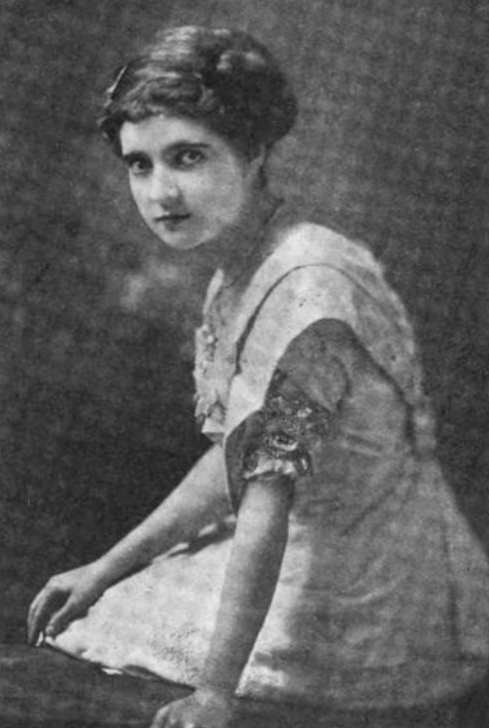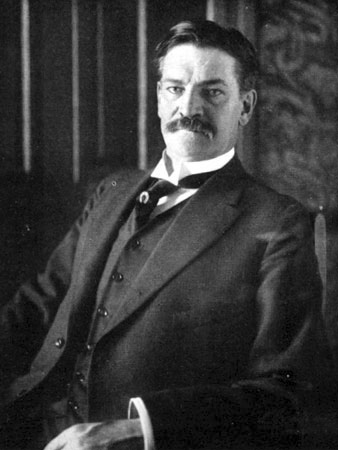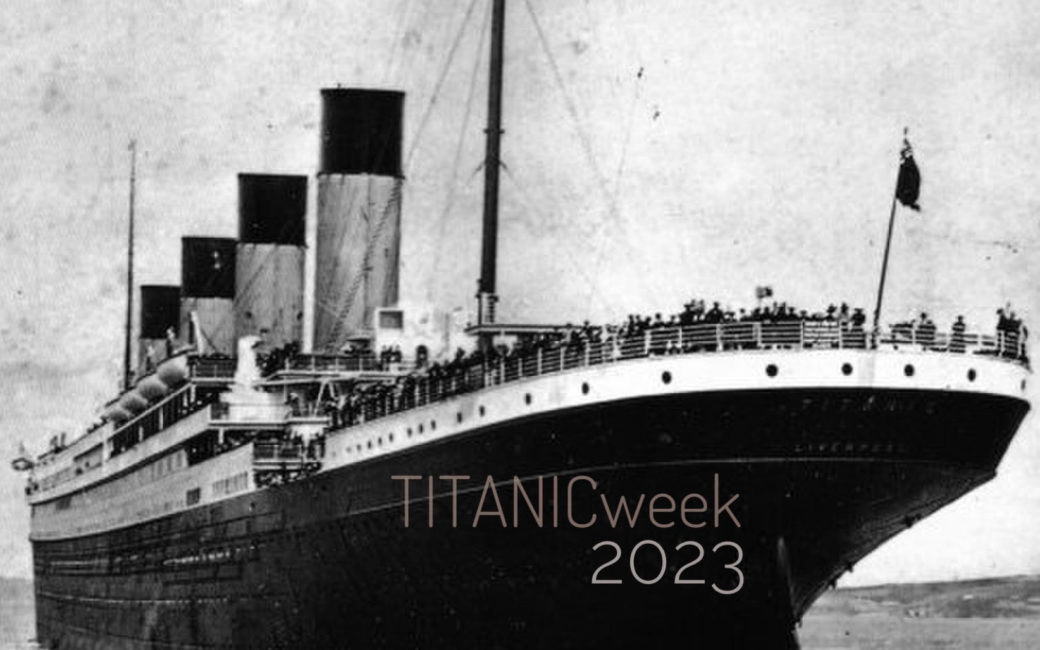"Enormous Icebergs Surrounding Us, White as Swans": Mary Conover Lines
As an expatriate family, Mary Conover Lines and her mother Elizabeth were already familiar with transatlantic travel, although they did not do so very often.
But in April 1912, they were intent to travel to Dartmouth College in New Hampshire, to attend the graduation of Mary’s older brother Howard.
American by birth, Mary had lived abroad with her parents for several years while her father, Ernest, represented his employer, New York Life Insurance Company, as its medical director in Europe. The family resided in Paris, which is where Mary received her education.
Mary and her mother traveled on their own, ahead of Mr. Lines who was kept back by work. "My mother and I came on ahead," she said, "as my father could not take too long a time away from his work. Just for fun and excitement, my father got a state room for my mother and myself on the new Titanic."
So Mrs. Lines and Mary boarded Titanic on April 10, 1912, as First-class passengers in Southampton. Their accommodations were located on D-Deck.
Mary was 16 years old at the time; Elizabeth, 50.
Titanic was, as Mary described it, "a delightful ship... in its furnishings [and] decorations."
On the evening of the iceberg strike, Mary and Elizabeth had retired early because it was so cold. Mary said they took great solace in the electric heater installed in the room.
Then they heard "a big blow on the ship" followed by "the escaping steam" from a funnel making what Mary called "a fiendish noise."
Shortly thereafter, Mary stated that their unnamed steward stopped by and instructed them to remain in their cabin, insisting there was no danger. Mary said, "I always thought that he should have come back and told us the truth, rather than say that we should stay in our cabin, but I think, probably, by that time he was too busy doing something else."
Mary and her mother only left their cabin once they overheard their neighbor, Percival White, "shout[ing] to his son to run for the lifeboats."
Mary elaborated on this moment in her own retelling.
Our next-door neighbor came running down to his cabin--he and his son were very delightful people from Hawaii and belonged to one of the families who had settled there as early missionaries and then become [sic] interested in many different things in Ireland. This father, I think, was talking to his son--they were rushing around finding their lifebelts. I opened the door to ask what was going on and he said, "My goodness, are you still here? Get up on deck as fast as you can. The ship is sinking."
After this exchange with Mr. White, Mary and her mother struggled to find and grab their lifevests because, according to Mary, they were out of reach on top of a cabinet.
The ladies then made their way up to the boat deck without getting properly dressed.
Mary and Elizabeth joined the other First-class passengers who were "congregating on the boat deck." The crew were distributing blankets from "two big barrels" as they stood, not moving much.
Eventually, Mary had the idea to go back down into their cabin and retrieve proper clothing for herself and her mother. She said that it was only on her way back down-deck, she said, that she realized there were quite so many flights of stairs.
On her descent, she encountered Second-class passengers on the stairs who were being directed "to the First-class boats" by an unidentified officer. "There was a slight moment of panic," she stated about the Second-class passengers, "wondering whether they were going to make it, but there was no real panic."
By the time Mary arrived on D Deck, she saw that most people had already fled the area. So she gave up the task of grabbing the clothing and headed back whence she had come.
Mary recalled that on the return journey, she found herself walking in line up the stairs behind John Jacob Astor and his young bride Madeleine.
Upon Mary's return to her mother in line on boat deck, the ladies were handed the afore-mentioned blankets and were "pushed into a boat."
Elizabeth later testified that an unnamed officer assisted her and her daughter in securing their lifebelts, and told them, "We're sending you out as a matter of precaution; we hope you will be back for breakfast."
Elizabeth and Mary Lines thereafter boarded Lifeboat 9, which was launched from the starboard side of Titanic by First Officer William McMaster Murdoch and Chief Purser Hugh McElroy.
On board with the Mary and Elizabeth were approximately 31 other passengers, including Leontine Aubart, the known mistress of Benjamin Guggenheim.
Mary later recounted that "it was a very dark night... I mean, there were stars, but you couldn't see anything." Furthermore, she insisted that there was no light in the lifeboat.
Fortunately, Mary had kept a penlight in her pocket. "it was the only thing that we had on the boat to find the oars and find the oar locks and get ourselves organized to try and row." Mary insisted that the sailors in the lifeboat refused to return to Titanic in any attempt to save others.
"The men who were manning the ship... were very unwilling to approach any nearer," she said, "because they said there would be terrific suction."
We had no idea where we were. We saw the ship go down, of course, and there was a terrific roar which occurred when it did so. And after that... we just shouted around... several people in the boat were, naturally, quite hysterical
Dawn eventually broke.
I’ll never forget this sunrise; the sky clear as a glass of water, the sea calm as a mirror, and the enormous icebergs surrounding us, white as swans.
In an interview recorded in 1970, Mary revisited the spectacular site.
About 4 o’clock in was really a very wonderful sight. That was when we saw the iceberg and, if you’ve ever been in the far north, you get a very white light just inside dawn, it’s sort of a very pearly white effect. And right around us there were five enormous white icebergs and the whole sea was cover with floe [sic] ice.
When Lifeboat 9 was rescued by the Carpathia that morning, Mary had to climb a rickety rope ladder--a frightening and near-impossible task, having been only half-dressed for hours in the severe cold.
On board Carpathia, she slept on the floor.
But their survival story is not typically what draws attention to Mary and Elizabeth Lines.
Instead, it is a conversation that the ladies happened to overhear, which was thereafter treated as one of catastrophic consequence.
In the afternoon hours of April 13th, Mary sat down with her mother for coffee in the First-class Reception Room, as they had made a habit of doing after luncheon.
After the ladies were seated, J. Bruce Ismay, chairman of the White Star Line, entered the room with Captain Smith.
The men were then seated at their usual corner table, mere feet from where Mrs. And Miss Lines were already situated.
Captain Smith and Mr. Ismay commenced a two-hour-long, apparently one-sided conversation.
And Mary and her mother bore witness to it.
In a sworn deposition taken in 1913, Mary’s mother asserted that she had witnessed Mr. Ismay pressuring Captain Smith to accelerate the Titanic by lighting the last boilers, so the ship could have a glorious earlier arrival in New York City.
41. Are you able to state from your recollection the words that you heard spoken between Mr. Ismay and Captain Smith on that occasion?
- We had had a very good run. At first I did not pay any attention to what they were saying, they were simply talking and I was occupied, and then my attention was arrested by hearing the day's run discussed, which I already knew had been a very good one in the preceeding (sic) twenty-four hours, and I heard Mr. Ismay - it was Mr. Ismay who did the talking - I heard him give the length of the run, and I heard him say "Well, we did better to-day than we did yesterday, we made a better run to-day than we did yesterday, we will make a better run to-morrow. Things are working smoothly, the machinery is bearing the test, the boilers are working well". They went on discussing it, and then I heard him make the statement: "We will beat the Olympic and get in to New York on Tuesday."
42. In your last statement, Mrs. Lines, were you giving the substance of the conversation or the exact words which were used?
- I heard "We will beat the Olympic and get in to New York on Tuesday" in those words.
43. If there were any particular words spoken that you can remember, I should be glad to hear them.
- Those words fixed themselves in my mind: "We will beat the Olympic and get in to New York on Tuesday."
44. Do I understand you to say that the other things that you stated were the general substance of what you heard and not the exact things or words used?
- No, I heard those statements.
Mrs. Lines continued by stating that she did not hear Captain Smith’s voice in this exchange, but only “saw him nod his head a few times.”
Mr. Ismay, however, was “very positive” and assertive tone. “One might almost say dictatorial,” Elizabeth testified. “He asked no questions… there was a great deal of repetition.... his voice sounded very emphatic."
Mrs. Lines went on to testify that the conversation ended unceremoniously.
"Come on, Captain," Ismay reportedly said as he rose from the table, "we will get somebody and go down to the squash courts."
SOURCE MATERIAL
https://www.topsfieldhistory.org/stories/documents/TopsfieldTitanicSurvivorsStory.pdf
https://www.titanicinquiry.org/lol/depositions/lines1.php
https://www.paullee.com/titanic/MLines.php
https://www.marinersmuseum.org/2012/04/new-letters-from-titanic-survivors/
https://www.encyclopedia-titanica.org/titanic-survivor/mary-conover-lines.html
https://www.encyclopedia-titanica.org/community/threads/mary-conover-lines.21423/
